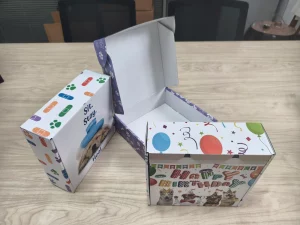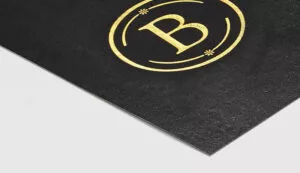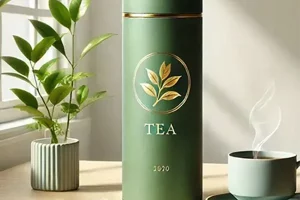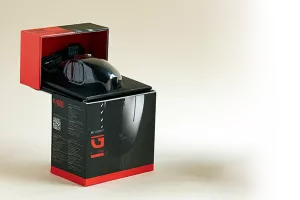Custom packaging plays a crucial role in helping brands grow and stand out in today’s competitive market. By creating unique and eye-catching packaging, businesses can attract more customers and build a strong brand identity. This article will explore how custom packaging can enhance brand growth and improve market competitiveness.
Table of Contents
Key Takeaways
- Custom packaging helps brands become more recognizable.
- Unique designs can make products more appealing to customers.
- Good packaging can influence people to choose one product over another.
- Eco-friendly packaging options are becoming more popular among consumers.
- Using technology can improve packaging design and personalization.
Understanding the Role of Custom Packaging in Brand Growth
Defining Custom Packaging
Custom packaging is all about creating unique and special packaging for products. It helps brands stand out and connect with customers. Custom packaging can make a big difference in how a product is seen in the market.
The Evolution of Packaging in Marketing
Over the years, packaging has changed a lot. Here are some key points about its evolution:
- From basic to creative: Packaging used to be simple, but now it’s more artistic.
- Focus on branding: Companies now use packaging to show their brand identity.
- Technology impact: New technologies have made it easier to create unique designs.
Why Custom Packaging Matters for Brands
Custom packaging is important for several reasons:
- Attracts attention: Unique packaging catches the eye of potential buyers.
- Builds loyalty: When customers love the packaging, they are more likely to return.
- Enhances experience: Good packaging makes the unboxing experience special.
Custom packaging is not just about looks; it’s about creating a connection with customers.
In summary, custom packaging plays a vital role in brand growth by making products more appealing and memorable. It helps brands communicate their values and stand out in a crowded market.
| Aspect | Importance |
|---|---|
| Visual Impact | Attracts customers |
| Brand Recognition | Builds brand identity |
| Customer Experience | Enhances satisfaction |
Designing Unique Packaging to Enhance Brand Identity
Elements of Effective Packaging Design
Creating unique packaging is essential for making a brand stand out. Here are some key elements to consider:
- Color: Choose colors that reflect your brand’s personality.
- Shape: Unique shapes can attract attention and make your product memorable.
- Material: The choice of material can convey quality and sustainability.
Aligning Packaging with Brand Values
Your packaging should tell a story about your brand. To align your packaging with your brand values, consider:
- Mission Statement: Ensure your packaging reflects your brand’s mission.
- Target Audience: Know who you are selling to and design accordingly.
- Cultural Relevance: Make sure your packaging resonates with the culture of your audience.

Case Studies of Successful Packaging Designs
Many brands have successfully used unique packaging to enhance their identity. Here are a few examples:
- Coca-Cola: Their iconic bottle shape is instantly recognizable.
- Apple: Minimalist packaging that reflects their brand’s innovation.
- Tiffany & Co.: The famous blue box that symbolizes luxury and exclusivity.
The power of custom packaging in building brand identity can transform your brand identity. Enhance recognition, boost visibility, and create a strong brand presence.
By focusing on these elements, brands can create packaging that not only protects their products but also enhances their overall identity in the market.
The Impact of Custom Packaging on Consumer Perception
How Packaging Influences Buying Decisions
Custom packaging plays a big role in how people decide to buy products. When a product looks good, it can catch a buyer’s eye and make them want to learn more. Custom packaging allows for creativity and innovation, enabling you to create a visually striking and memorable design that captures the essence of your brand. Here are some ways packaging affects buying choices:
- First Impressions: The look of the packaging can make a strong first impression.
- Brand Recognition: Unique designs help customers remember your brand.
- Quality Signals: Good packaging can suggest that the product inside is high quality.
The Psychology Behind Packaging Choices
People often make decisions based on feelings rather than facts. Packaging can trigger emotions that influence buying behavior. For example:
- Colors: Different colors can evoke different feelings.
- Shapes: Unique shapes can attract attention and create curiosity.
- Textures: Interesting textures can enhance the experience of opening a product.
Building Trust Through Quality Packaging
Quality packaging can help build trust with customers. When people see well-made packaging, they often feel more confident in the product. Here are some key points:
- Durability: Strong packaging protects the product and shows it’s reliable.
- Transparency: Clear packaging can show what’s inside, making customers feel secure.
- Sustainability: Eco-friendly packaging can attract customers who care about the environment.
In today’s market, the way a product is packaged can be just as important as the product itself. Good packaging not only attracts customers but also helps build a lasting relationship with them.

Sustainability and Innovation in Custom Packaging

Eco-Friendly Packaging Solutions
In today’s world, many brands are focusing on sustainable packaging. This means using materials that are good for the environment. Here are some popular eco-friendly options:
- Recyclable materials: These can be reused after their first use.
- Biodegradable options: These break down naturally over time.
- Reusable packaging: This can be used multiple times, reducing waste.
Innovative Materials in Packaging
Innovation in packaging is crucial for brands looking to stand out. New materials can make packaging more attractive and functional. Some examples include:
- Plant-based plastics: Made from renewable resources.
- Mushroom packaging: A natural alternative that is compostable.
- Water-soluble films: These dissolve in water, leaving no waste behind.
Balancing Cost and Sustainability
While sustainable packaging is important, brands must also consider costs. Here are some strategies to balance both:
- Invest in research: Find materials that are both affordable and eco-friendly.
- Collaborate with suppliers: Work together to find the best solutions.
- Educate consumers: Show them the benefits of sustainable packaging to justify costs.
Sustainable packaging is not just a trend; it’s a necessity for future growth.
By focusing on packaging design and innovation, brands can improve their market position while being responsible to the planet.
Strategies for Implementing Custom Packaging in Marketing
Integrating Packaging into Brand Strategy
To effectively use custom packaging, brands should first align their packaging with their overall marketing strategy. This means:
- Understanding the target audience and their preferences.
- Ensuring the packaging reflects the brand’s identity and values.
- Using packaging as a tool to tell the brand story.

Collaborating with Designers and Manufacturers
Working with the right partners is crucial. Here are some steps to consider:
- Choose experienced designers who understand your vision.
- Collaborate with manufacturers who can produce high-quality packaging.
- Keep communication open to ensure everyone is on the same page.
Measuring the Success of Packaging Initiatives
To know if your custom packaging is working, you need to track its impact. Consider these metrics:
- Sales growth after launching new packaging.
- Customer feedback and reviews about the packaging.
- Social media engagement related to packaging.
Custom packaging is not just about looks; it’s about creating a memorable experience for customers. Unique packaging can lead to better brand loyalty and increased sales.
| Metric | Before Custom Packaging | After Custom Packaging |
|---|---|---|
| Sales Growth (%) | 5% | 15% |
| Customer Satisfaction Rate | 70% | 90% |
| Social Media Mentions | 100 | 300 |
Challenges and Opportunities in Custom Packaging
Overcoming Common Packaging Challenges
Custom packaging can be tricky. Here are some common challenges brands face:
- Cost: Custom packaging can be more expensive than standard options.
- Production Time: Creating unique designs may take longer.
- Supply Chain Issues: Finding the right materials can be hard.
Adapting to Market Trends
Brands need to keep up with changing trends. Some important trends include:
- Sustainability: More consumers want eco-friendly options.
- Personalization: Customers enjoy packaging that feels special to them.
- Technology: New tech can improve packaging design and production.
Exploring New Opportunities for Growth
There are many chances for brands to grow through custom packaging. Some opportunities are:
- Brand Differentiation: Unique packaging helps a brand stand out.
- Customer Engagement: Creative designs can attract more customers.
- Market Expansion: Custom packaging can open doors to new markets.
Custom packaging is not just about looks; it’s about creating a connection with customers.
In conclusion, while there are challenges in custom packaging, the opportunities for growth and connection with consumers are significant. Brands that adapt and innovate can thrive in this exciting landscape.
Future Trends in Custom Packaging and Brand Growth

Technological Advancements in Packaging
In the coming years, we can expect to see exciting new technologies in packaging. One major trend is the rise of smart packaging. This means packaging that can do more than just hold a product. For example, it might have QR codes, RFID tags, or NFC chips that help customers learn more about what they are buying.
The Role of Personalization in Packaging
Personalization is becoming very important in packaging. Brands are now focusing on making their packaging unique for each customer. This can include:
- Custom designs that reflect individual tastes.
- Special messages or names on the packaging.
- Packaging that changes based on customer feedback.
Predicting Future Consumer Preferences
As we look ahead, understanding what consumers want is key. Here are some trends to watch for:
- Increased demand for eco-friendly materials.
- A preference for minimalistic designs.
- More interest in interactive packaging that engages customers.
The future of packaging is not just about looks; it’s about creating a connection with the customer.
By keeping an eye on these trends, brands can stay competitive and grow in the market.
Conclusion
In conclusion, unique packaging plays a big role in helping brands grow and stand out in the market. When companies use special designs and materials, they not only catch the eye of customers but also create a memorable experience. This can lead to more sales and loyal customers. As businesses continue to compete, focusing on customized packaging can give them an edge. By making their products look different and appealing, brands can improve their chances of success and connect better with their audience.
Frequently Asked Questions
What is custom packaging?
Custom packaging is when companies create special boxes or bags that are designed just for their products. It helps make their items stand out and look unique.
Why is custom packaging important for brands?
Custom packaging is important because it can help a brand get noticed. It can tell customers about the brand’s story and values, making them more likely to choose that product.
How does packaging affect buying decisions?
Packaging can really change how people decide to buy something. If a package looks nice and interesting, people are more likely to pick it up and buy it.
What are eco-friendly packaging options?
Eco-friendly packaging options are materials that are good for the environment. This can include things like recycled paper, biodegradable plastics, or reusable containers.
How can brands measure the success of their packaging?
Brands can measure how well their packaging works by looking at sales numbers, asking customers for feedback, and seeing if more people are talking about their products.
What are some future trends in packaging?
Some future trends in packaging include using technology to create smart packages, personalizing packaging for individual customers, and focusing more on being eco-friendly.








